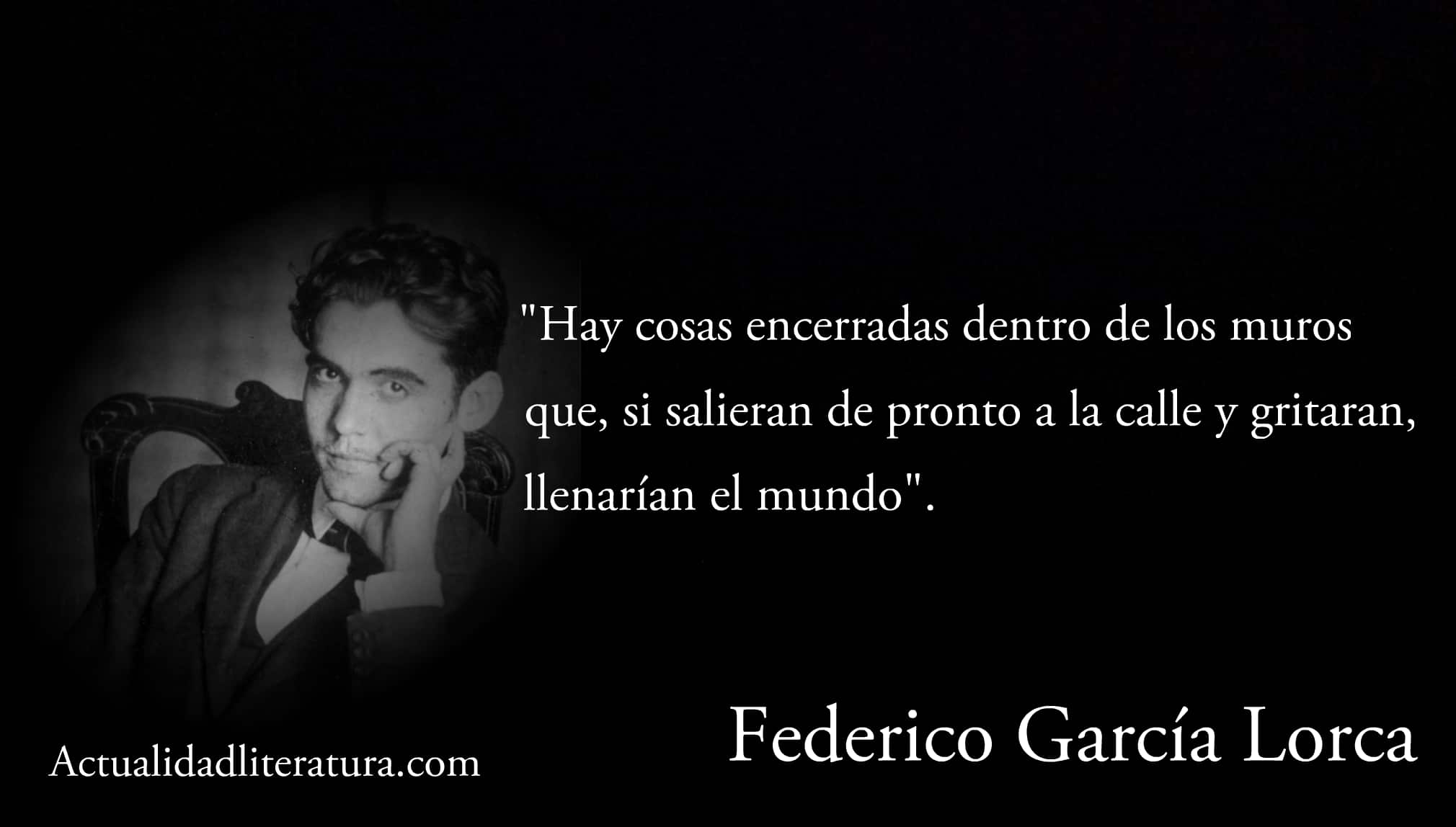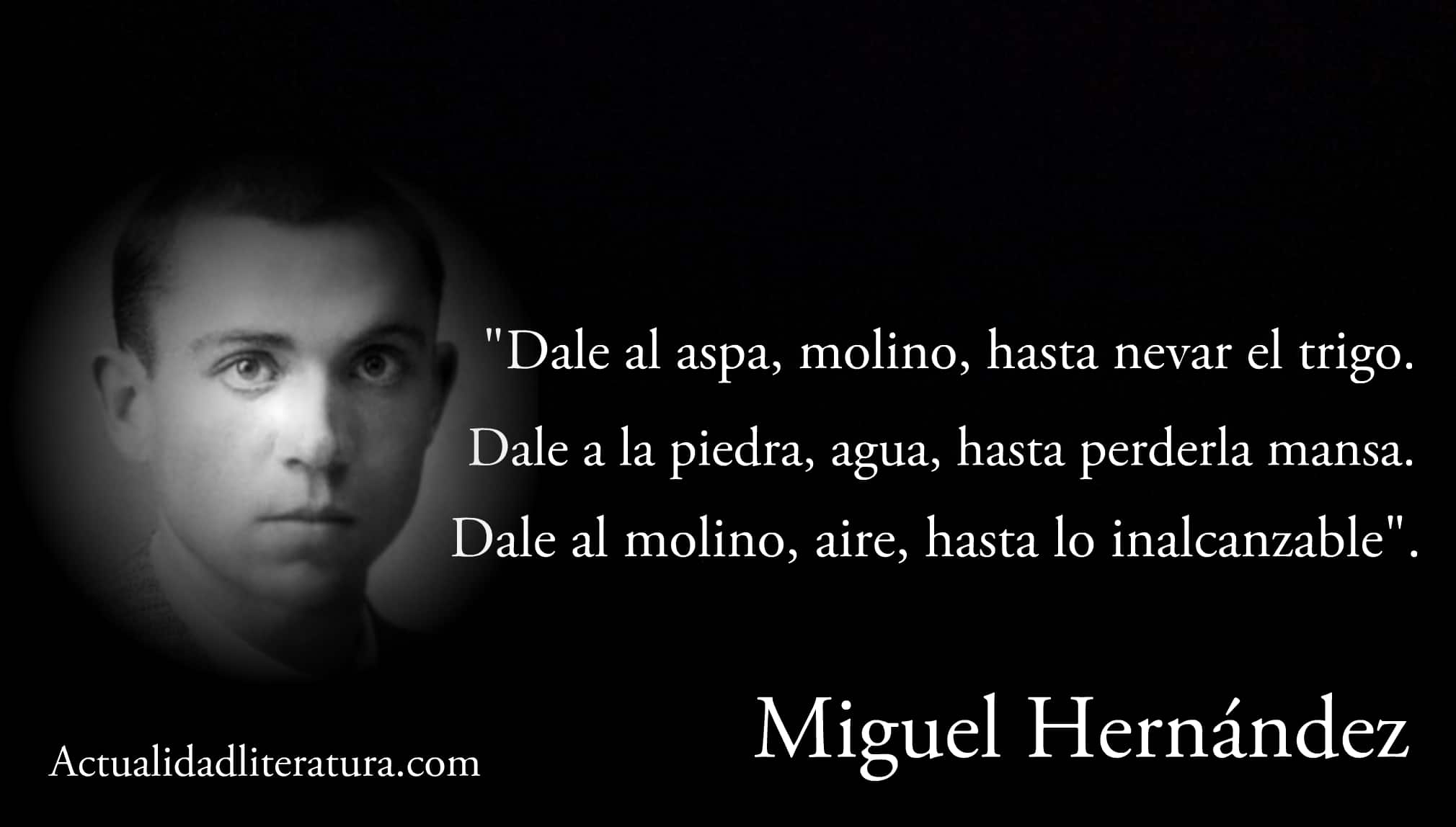
Phrase by Federico García Lorca.
When an Internet user searches for “Generación del 27 poemas”, the results point to the work of authors such as Pedro Salinas, Rafael Alberti or Federico García Lorca. There are also writings by Dámaso Alonso, Jorge Guillén, Gerardo Diego, Emilio Prados, Vicente Aleixandre, Manuel Altoaguirre, Adriano del Valle, Juan José Domenchina and Pedro García Cabrera.
That list includes the creations of other poets partially related to the generation. They are Miguel Hernández, León Felipe, José Moreno Villa, Fernando Villalón, Max Aub and Joaquín Romero Murube. In the same way, the illustrious Chilean, Pablo Neruda was closely linked to the group's surrealist artists, especially Salvador Dalí.
The Generation of '27
This was the name given to a group of avant-garde literati, painters and intellectuals that emerged in 1927. The role of its founders —Pedro Salinas, Rafael Alberti, Melchor Sánchez Almagro and Gerardo Diego— was to pay tribute to Luis de Gongora (1561 - 1627), when three hundred years of his death were completed.
The forerunners of the movement considered Góngora "the greatest exponent of the Baroque literature of the Golden Age." Spanish. However, the generational qualification was discussed by Salinas himself, who affirmed that the members of the group did not conform to Julius Peterson's concept of "generation". This historiographic definition is governed by the following criteria:
- Little distance between the years of birth of its members. In the case of the Generation of 27, some of them had age differences of up to 15 years.
- Similar academic and / or intellectual training. Although many of them coincided at the Madrid Student Residence, were a cultural brotherhood with common aesthetic features and a shared philosophy.
- Personal relationships. To tell the truth, the members of the Generation of 27 were more grouped in pairs or trios; it was not a very cohesive group.
- Intervention in own acts of a collective nature and the existence of a "generational event", causing the union of wills. In this point, the tribute of its founders to Luis de Góngora and the “Sin Sombrero” event are the two most momentous events of the group.
- Presence of an identifiable leader (guide).
- No ties or continuity with the next generation. In this regard, academics consider that some of its members - Miguel Hernández, for example - were members of the Generation of '36. Similarly, Dámaso Alonso and Gerardo Diego remained in the country after the Spanish Civil War and maintained a certain relationship with the Franco's line.
- Generational language (similar style).
Characteristics of the poetry of the Generation of 27
Engaged
The poets of the Generation of 27 distinguished themselves by their social and political commitment. Therefore, they were not writers motivated merely by the pleasure of lyrical composition, since their lyrics had a communicative purpose of social denunciation. Thus, poetry - like the other artistic manifestations of the movement - became a means of expression and protest.

Quote by Miguel Hernández.
This trend is due to Spain's turn during the second half of the 1920s towards a more progressive society, with more rights. Accordingly, the writers of the Generation of 27 reflected the trend of a country more willing to integrate into the world. A sample of committed poetry is the poem "For whom I write" by Vicente Aleixandre; fragment:
"I write for those who do not read me. That woman who
Run down the street like I'm going to open the doors
at dawn.
Or that old man who sleeps on the bench in that square
little girl, while the setting sun with love takes her,
surrounds you and glides you gently into its lights ”.
Progressive
The poets of the movement had a progressive conception of literature and art in general. Thus, they intended to develop new literary forms in order to give letters a renewed air. However, this transformation did not seek a break with tradition, because the purpose was not to deny the Spanish poetry of the preceding centuries.
Avant-garde
The writers of the Generation of '27 sought to achieve integration between traditional lyrical forms and the emerging subgenres of that time. Namely, they were reactionary artists towards the established order, looking for other ways of perceiving and understanding the world. One of the greatest exponents of progressive poetry was Pedro Salinas.
Below is a fragment of the poem “Fe mía”, by Salinas:
"I don't trust the rose
of paper,
so many times that I did it
me with my hands.
I don't trust the other
true rose,
daughter of the sun and seasoning,
the bride of the wind.
Of you that I never made you
of you that they never made you,
I trust you, round
random insurance ”.
Some of the influential emerging subgenres in the Generation of 27
- Surrealism. One of the best known examples of surrealist poetry from the Generation of 27 is the collection of poems About angels (selection) (1929) by Rafael Alberti. Next, a fragment of the poem "Los angeles colegiales":
“None of us understood anything:
nor why were our fingers made of Chinese ink
and the afternoon closed bars to open books at dawn.
We only knew that a straight, if you want, can be curved or broken
and that the wandering stars are children who ignore arithmetic ”.
- Dadaism
- Impressionism
- Expressionism
- Futurism
- Cubism. One of the best known samples is the calligram Rose of death Federico García Lorca.
Honored the heritage of the Spanish Golden Age
Apart from the aforementioned Luis de Góngora, the members of the movement embraced the classics of Quevedo, Lope de Vega and Garcilaso de la Vega. Based on these ancient texts, the Generation of '27 poets created new styles by mixing that tradition with the avant-garde ideologies of that time.
Popular poetry
Almost all the poets of the Generation of 27 showed a very heartfelt veneration for popular lyrical forms.. Among them, the Romancero and the traditional Cancionero, as well as the creations of Gil Vicente and Juan de Encina. A sample of this trend is palpable in “El romance del Duero” by Gerardo Diego; fragment:
"You, old Duero, you smile
between your silver beards,
grinding with your romances
badly achieved harvests ”.
Creative freedom
The poets of the Generation of 27 made compositions with absolute freedom at the metric level and in the stylistic aspect. In addition, free verse was very frequent among the authors of the movement. But this did not prevent them from achieving a neat (and even embellished) language. They generally used metaphors to give their surrealist messages and visions more forcefulness.